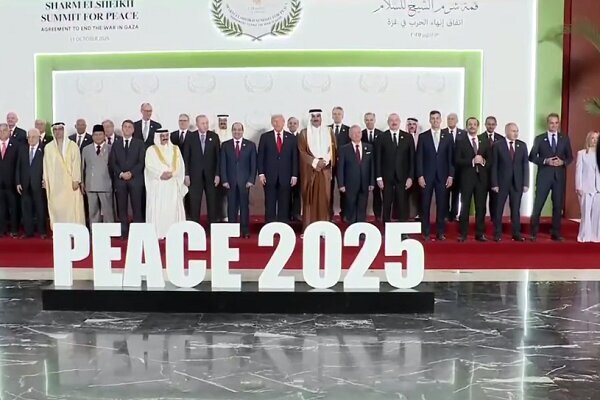The Biggest Threat to the Failure of the Sharm El-Sheikh Agreement: Temporary Calm or Lasting Peace?

webangah News Agency, international Desk: The recent ceasefire agreement in Gaza was signed in Sharm el-sheikh, Egypt. This deal included the release of Israeli prisoners and a temporary halt to hostilities, prompting positive reactions and hope. However, a deeper analysis of the agreement’s nature alongside current political and security conditions shows that this ceasefire does not ensure sustainable peace in Gaza in either the short or medium term.
Unresolved Core Issues Deferred to the Future
One major weakness of the Sharm El-Sheikh agreement is that critical and complex issues concerning Gaza’s final status-such as borders and governance-remain unresolved within it. These matters have effectively been postponed to an undefined future. This approach guarantees only a temporary ceasefire rather than real peace. The long history of failed Middle East peace agreements clearly illustrates that “final status” details are where negotiations typically stall. The Sharm El-Sheikh accord suffers from these same difficulties; what has been signed should be viewed more as a ceasefire than as a framework for lasting peace.
Hamas Refuses Full Disarmament
The disarmament of resistance groups-particularly Hamas-is a key demand by Israel for continuing any agreement. Donald Trump’s 20-point plan and other peace initiatives have centered on disarming Hamas. Yet Hamas remains outright unwilling to relinquish its weapons unless two conditions are met: formation of a Palestinian government and Israeli guarantees against renewed conflict. Israel strongly opposes these terms, making it unlikely Hamas will take steps back without significantly stronger assurances.
No Full Israeli Withdrawal
Israel shows no readiness for full withdrawal from Gaza. Prime Minister Benjamin Netanyahu has emphasized that Israeli forces will remain until Hamas disarms wholly while continuing operations against them inside Gaza.This creates an unstable security habitat prone to collapse at even minor new tensions or clashes.
Lack of Political Consensus Over Governance in Gaza
The issue of governing Gaza remains one of the moast challenging obstacles. The Sharm El-Sheikh deal proposes temporary governance by a committee composed of Palestinians alongside international observers under supervision by Trump’s “Peace Commission.” However, this solution lacks Hamas’s approval.
The Palestinian Authority (PA), which governs parts of the West Bank but sharply disputes wiht Hamas over control in Gaza, faces stiff opposition from Israel over entry into Gaza unless large-scale political reforms take place – reforms widely regarded as unrealistic.
Netanyahu has explicitly rejected recognizing the PA as governing authority over Gaza without essential changes – demands unlikely to be fulfilled – preventing establishment of any unified legitimate political leadership capable domestically or internationally to secure sustainable peace.
Repeated Violations of Previous Ceasefires
History shows earlier truces between Israel and Hamas were fragile and short-lived before being broken quickly.
The March 2025 ceasefire lasted only weeks before failing due to lack of progress toward final negotiations.
This pattern demonstrates that without addressing root causes amid ongoing political-military pressures, stable truces remain unattainable.
Domestic Political Pressure Inside Israel Weakens Support for Two-State solution
The right-wing-led Israeli cabinet under Netanyahu strongly opposes establishing an independent Palestinian state.
It advocates expanding Israeli sovereignty over parts including the West Bank and Jerusalem,
policies which not only block emergence of such statehood but also further escalate regional tensions.
Conclusion
Taken together, these factors leave little doubt that the Sharm El-Sheikh agreement should be regarded primarily as fragile stopgap measure aimed at temporarily halting violence rather than laying foundations for enduring peace in Gaza.
Absent broader agreements compelling Israel toward meaningful resolutions on key issues-including verified withdrawals-the prospect for durable tranquility appears bleak.
Repeated breaches by Israel constitute one major cause deepening mutual mistrust impeding lasting reconciliation between parties.
Israel’s history reveals patterns where commitments post-ceasefires or limited accords were frequently disregarded;
its violations include prolonging military presence beyond agreed zones
and imposing strict controls on crossings limiting people’s movement along with goods flow,
contributing decisively to ongoing humanitarian crisis within Gazans.
These actions demonstrate lack serious willingness from Tel Aviv side toward equitable conditions acceptable locally-which fuels frustration leading back into cycles violence despite temporary deals concluded so far.


